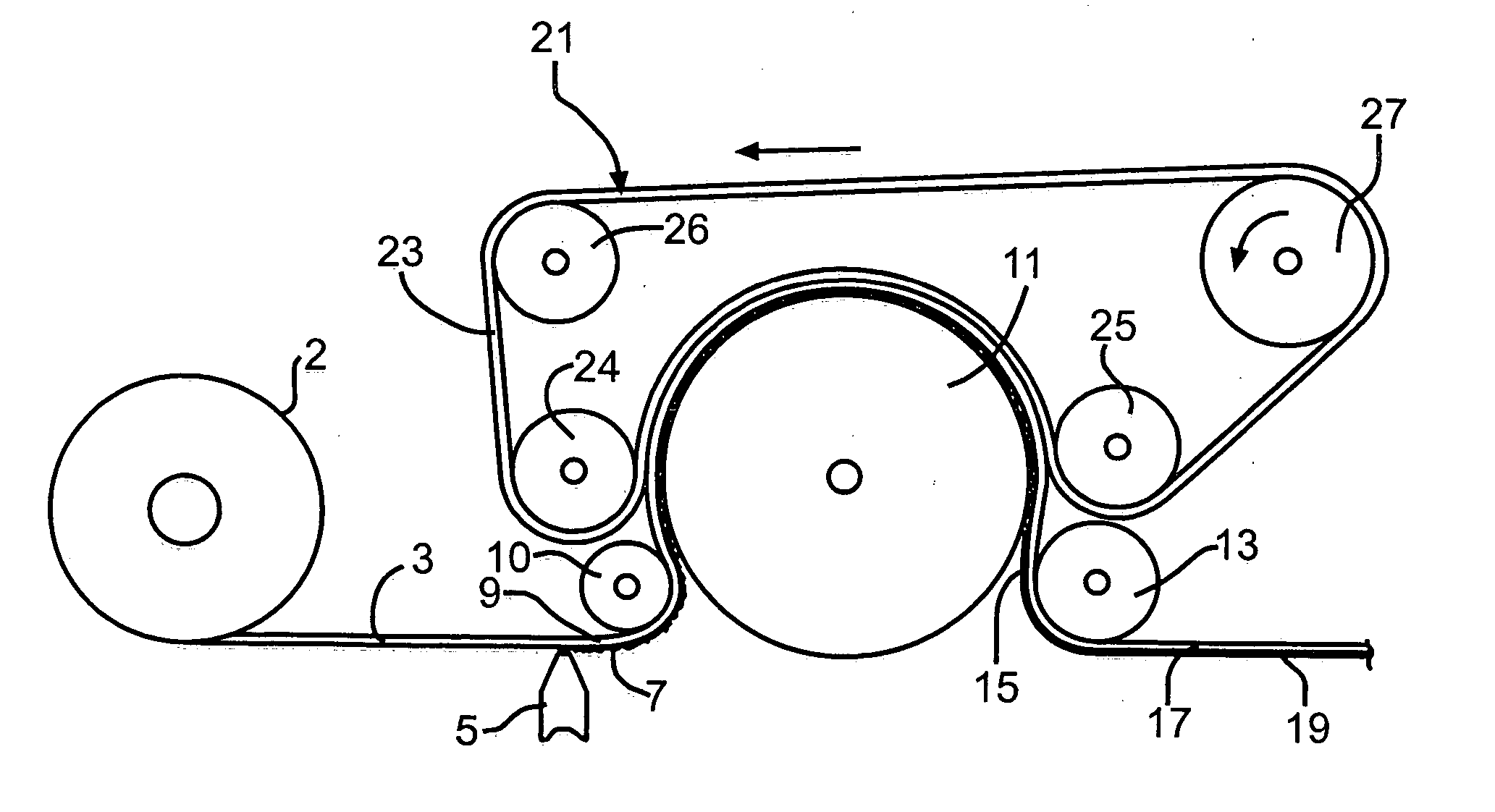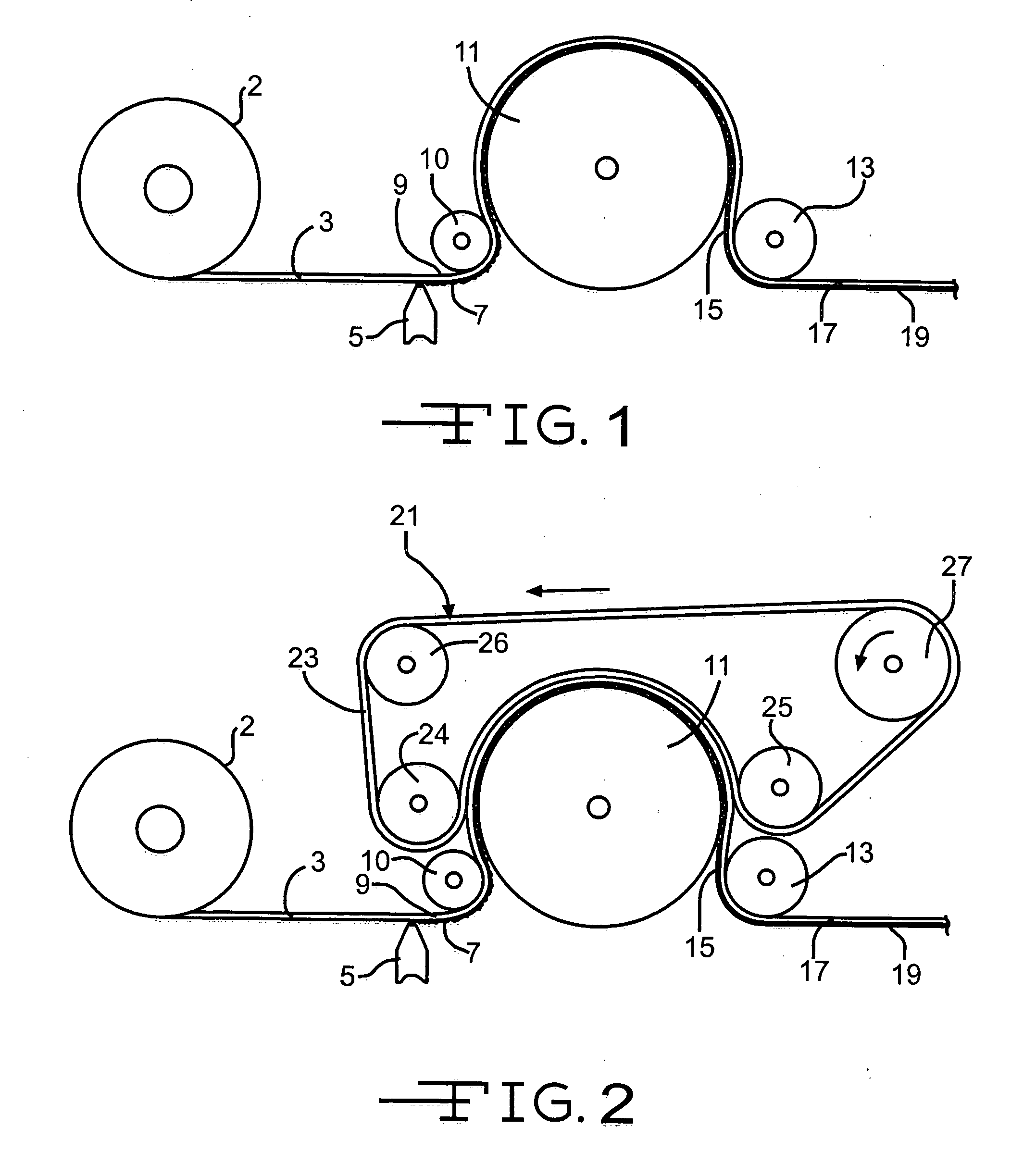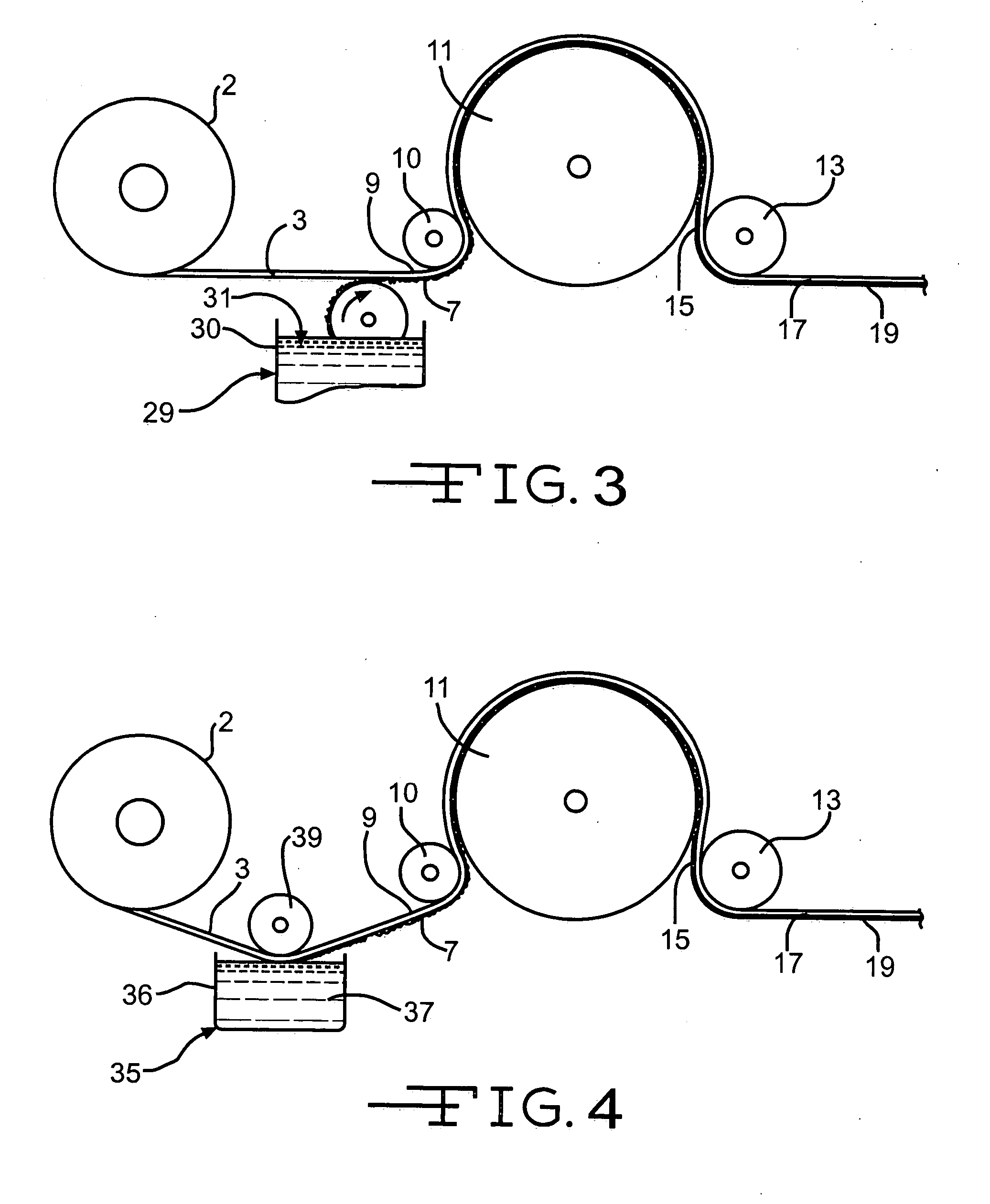Coated mat products, laminates and method
a technology of coating mats and laminates, applied in the field of coating mat products, laminates and methods, can solve the problems of irritating the hands and arms of workers handling and installing insulating board products, process breakage adding to production costs, and irritating the hands and arms of workers, so as to improve fire resistance, reduce costs, and ensure the effect of safety
- Summary
- Abstract
- Description
- Claims
- Application Information
AI Technical Summary
Benefits of technology
Problems solved by technology
Method used
Image
Examples
example 1
[0048] An 8514 glass mat from Johns Manville weighing 6.4 grams / sq. ft, comprised of ¾ inch long, 13-micron diameter E glass fibers, bonded with 20% acrylic copolymer resin is coated with a 93% calcium carbonate / 7% acrylic copolymer latex resin blend at 74% solids concentration. The carbonate was Imerys #10 White and the acrylic was Noveon Hycar™ 26391. The coating was applied directly to the mat surface and this was dried in a circulating hot air oven with the surface exposed to air in the normal prior art manner. The dry coating weight was 19.9 grams / sq. ft., yielding a coated composite with an Ra of 16 microns and an Ry of 116 microns.
example 2
[0049] A fiberglass mat, 8514 mat from Johns Manville, weighing 6.4 grams / sq. ft, comprised of 13-micron diameter, ¾ inch long, E glass fibers, bonded with 20% acrylic copolymer cured resin is coated with a an aqueous composition of 93 wt. percent of calcium carbonate and 7 wt. percent of an acrylic copolymer latex resin, based on the dry weight, and enough water to produce a 74 wt. percent solids concentration. The coating was applied to a smooth steel surface, dry mat nipped onto the coating and the composite subsequently dried on the smooth steel surface. The carbonate was Imery's #10 White and the acrylic copolymer latex resin was Noveon Hycar 26391. The dry coating weight was 19.3 grams / sq. ft., and a coated surface smoothness of an Ra of 1.2 microns and an Ry of 84 microns.
example 3
[0050] The same procedure as example 1 above was used, but a thicker coating having a dry coating weight of 29.8 grams / sq. ft. was applied, yielding an Ra of 1.2 microns and an Ry of 18.4 microns on the surface of the dry coated mat.
PUM
| Property | Measurement | Unit |
|---|---|---|
| surface smoothness Ra | aaaaa | aaaaa |
| smoothness Ra | aaaaa | aaaaa |
| diameter | aaaaa | aaaaa |
Abstract
Description
Claims
Application Information
 Login to View More
Login to View More - R&D
- Intellectual Property
- Life Sciences
- Materials
- Tech Scout
- Unparalleled Data Quality
- Higher Quality Content
- 60% Fewer Hallucinations
Browse by: Latest US Patents, China's latest patents, Technical Efficacy Thesaurus, Application Domain, Technology Topic, Popular Technical Reports.
© 2025 PatSnap. All rights reserved.Legal|Privacy policy|Modern Slavery Act Transparency Statement|Sitemap|About US| Contact US: help@patsnap.com



